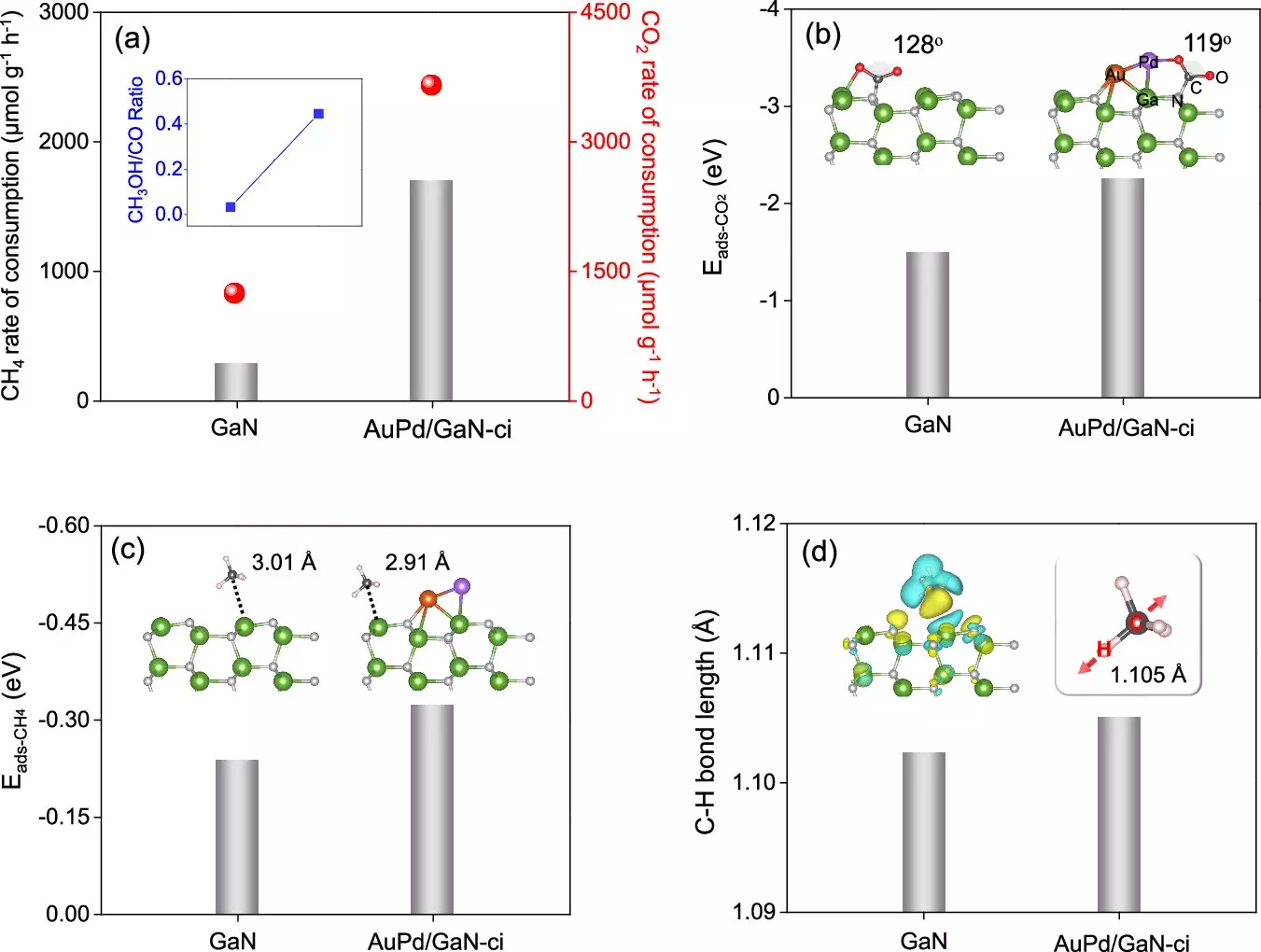Researchers at McGill University have made a groundbreaking advancement in the fight against climate change by utilizing sunlight to convert two of the most detrimental greenhouse gases—methane and carbon dioxide—into useful chemicals. This innovative research opens up avenues for reducing industrial emissions while simultaneously providing sustainable alternatives to traditional manufacturing processes. Hui Su, a Postdoctoral Fellow involved in the study, encapsulates the vision: a transformative future where harmful emissions can be repurposed into clean fuels and essential materials for everyday life.
The process developed by the research team involves a unique light-driven chemical reaction, wherein the byproducts of pollution are transformed into green methanol and carbon monoxide. Notably, this dual-output mechanism occurs in a single reaction, setting it apart from conventional methods which often require multiple steps and high energy inputs. What is particularly exceptional about this process is its resemblance to the natural phenomenon of photosynthesis, wherein plants utilize sunlight to convert carbon dioxide and water into glucose. By mimicking this process using a specialized catalyst composed of gold, palladium, and gallium nitride, the team has successfully created a method for exploiting solar energy to address environmental problems.
At the heart of this transformative technology is the catalyst that facilitates the reaction at room temperature, sidestepping the need for elevated heat or aggressive chemicals commonly found in industrial processes. This significant reduction in energy requirements not only increases the efficiency of the chemical transformation but also enhances its feasibility for widespread application. Senior author Chao-Jun Li emphasizes the importance of harnessing readily available solar energy to recycle greenhouse gases into products that benefit society.
The Implications for Canada and Beyond
The implications of this research extend beyond just a technological innovation; it serves as a critical component in Canada’s strategy to achieve net-zero emissions by 2050. As industrial emissions continue to pose a severe threat to our climate, this process provides a viable solution that aligns with sustainability goals. Jing-Tan Han, a Ph.D. student within the project, highlights that this innovation not only turns a pressing environmental concern into an opportunity for progress but also emphasizes that solutions to climate challenges can involve creativity and ingenuity.
The findings from McGill University not only illustrate the potential for addressing climate change but also highlight the power of interdisciplinary research in developing solutions grounded in natural processes. As the world grapples with the effects of climate change, innovations like this remind us of the vital role of scientific research in shaping a sustainable future. Through continued exploration in fields such as green chemistry, we can hope to unlock more transformative solutions that convert ecological challenges into opportunities for advancement.


Leave a Reply